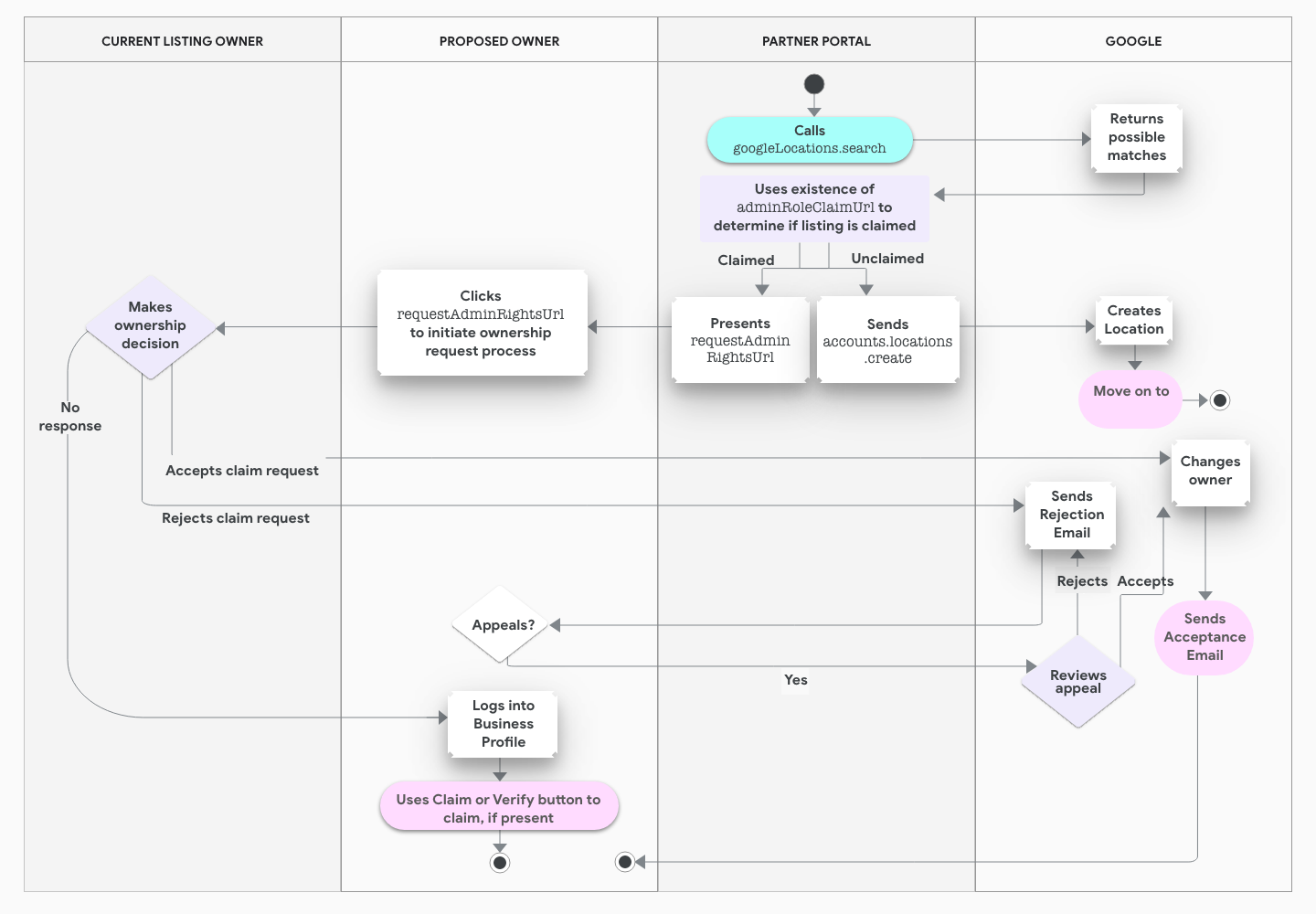GoogleLocations API cho phép bạn xem trước xem một vị trí có được xác nhận quyền sở hữu trong Trang doanh nghiệp hay không. Bằng cách này, nếu vị trí đã được xác nhận quyền sở hữu, bạn có thể yêu cầu quyền truy cập vào vị trí đó ngay lập tức. Ngoài ra, nếu quản lý các tài khoản đã xác minh hàng loạt, bạn có thể chọn trước các kết quả trùng khớp tiềm năng một cách chính xác hơn và tránh tạo vị trí trùng lặp.
Điểm cuối API trả về một URL cho biết liệu một vị trí đã được xác nhận quyền sở hữu hay chưa. Nếu URL đó đã được xác nhận quyền sở hữu, thì bạn có thể bắt đầu quy trình yêu cầu quyền truy cập bằng chính URL đó.
Hình ảnh sau đây cung cấp thông tin tổng quan về quy trình để có được quyền sở hữu đối với một vị trí.

Các bước sau đây cho phép bạn sử dụng API GoogleLocations:
- Thu thập dữ liệu vị trí từ người bán.
-
Gọi điểm cuối
googleLocations.search. Cung cấp dữ liệu vị trí trong phần nội dung của lệnh gọi. Ngoài ra, bạn có thể cung cấp thông tin này trong một chuỗi truy vấn, tương tự như nội dung mà người dùng sẽ nhập vào Tìm kiếm hoặc Maps. Ví dụ: "Starbucks 5th ave NYC".API này trả về danh sách các vị trí có thể khớp và thông tin về từng vị trí, chẳng hạn như
locationNamevà địa chỉ. - Chọn vị trí khớp với vị trí của bạn. Nếu không có kết quả trùng khớp, hãy gọi
accounts.locations.createvà chuyển sang bước 5. -
Dựa trên trạng thái của
requestAdminRightsUrltrong phản hồi, hãy thực hiện các thao tác sau:- Nếu
requestAdminRightsUrltồn tại, thì một người dùng khác có quyền sở hữu trang thông tin. Hướng dẫn người bán truy cập vào URL để bắt đầu yêu cầu quyền truy cập và quyền sở hữu vị trí hiện có trong Trang doanh nghiệp. - Nếu
requestAdminRightsUrlkhông tồn tại, hãy gọiaccounts.locations.createvà tạo một trang thông tin mới sẽ được xác minh sau.
- Nếu
- Nếu đã tạo trang thông tin mới trong quy trình này, bạn có thể sử dụng các API xác minh để bắt đầu xác minh trang thông tin. Để biết thêm thông tin, hãy xem phần Quản lý quy trình xác minh.
